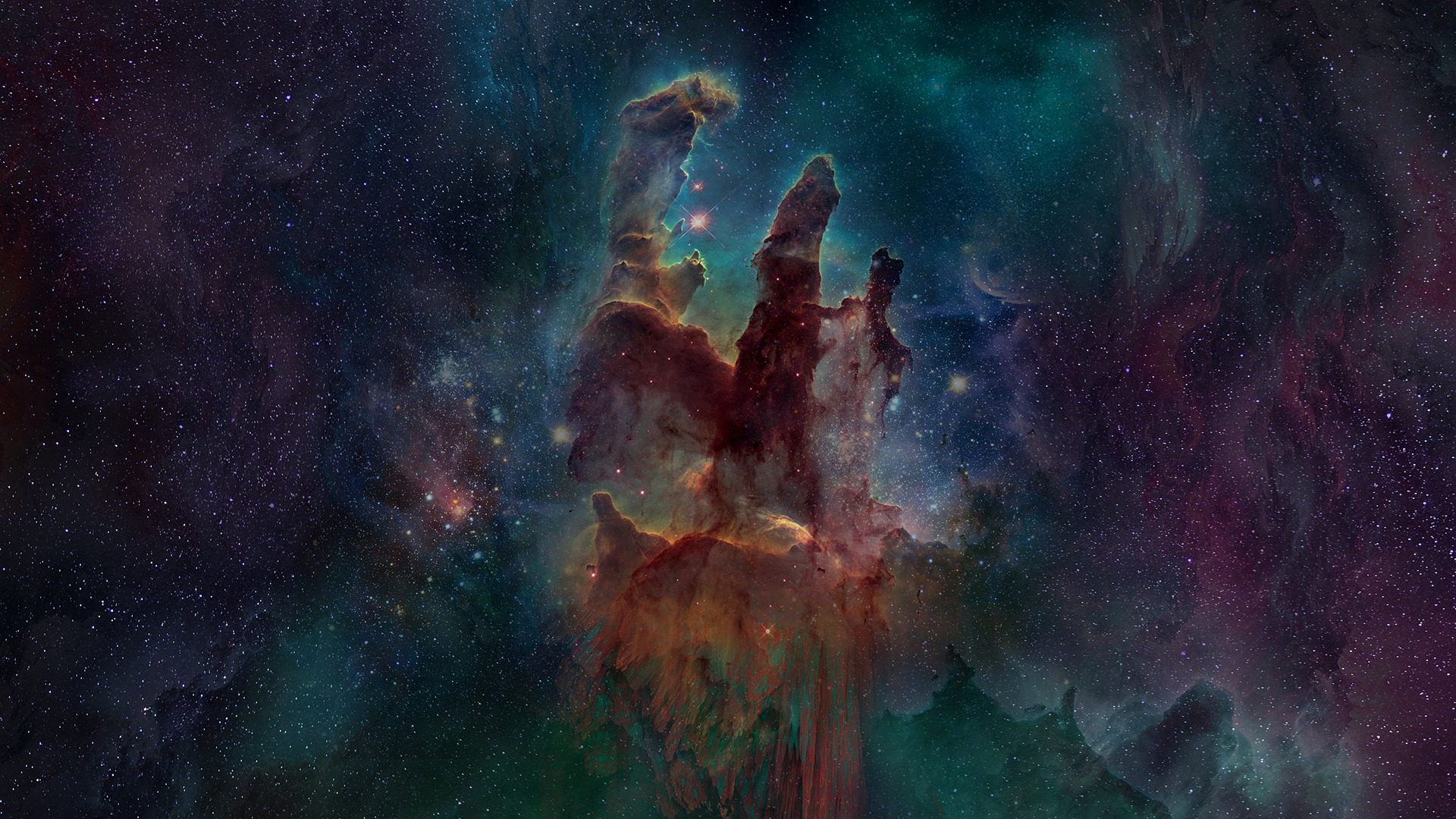Reading Time – 20 Minutes, Difficulty Level: Expert
Within the vast expanse of the cosmos, stars act as laboratories where nuclear reactions govern their fundamental behavior. Nucleosynthesis, a crucial astrophysical process, plays a pivotal role in shaping the formation of chemical elements within stars, thus profoundly influencing the composition of the universe. In this detailed article, I’m going to investigate the intricacies of nuclear reactions transpiring within stellar cores, emphasising the significance of nucleosynthesis in the evolutionary trajectory of stars and the genesis of cosmic elements.
Stars encompass a captivating stage where nuclear reactions occur under extreme physical conditions, characterised by soaring temperatures and pressures. These high-energy processes of fusion and fission release vast amounts of energy, endowing stars with their radiant luminosity and maintaining their delicate hydrostatic equilibrium. Nucleosynthesis emerges as a fundamental astrophysical phenomenon, being an indispensable mechanism driving cosmic evolution and the elemental diversity within the universe.
Hydrogen Fusion – The Foundation of Stellar Radiance
At the inception of a star’s cosmic journey, hydrogen fusion takes center stage as the principal nuclear process defining the star’s luminous existence. In stars akin to our Sun, the proton-proton chain assumes prominence, orchestrating hydrogen fusion. This elegant cascade of nuclear reactions initiates with the fusion of four protons, culminating in the production of helium nuclei.
The proton-proton chain unfolds in a series of intricate steps, each governed by the strong nuclear force and characterised by the transformation of elementary particles within the stellar core. Two protons converge, overcoming their mutual electromagnetic repulsion through the mediation of subatomic particles called positrons, resulting in the genesis of deuterium, an isotope of hydrogen, alongside a positron and a neutrino. The ensuing phase entails the fusion of another proton with deuterium, begetting a helium-3 nucleus and releasing a photon, or gamma-ray photon, of prodigious energy.
The sublime harmony of nuclear reactions progresses further, with two helium-3 nuclei fusing to form helium-4, the sought-after end product of the proton-proton chain. This final step culminates in the liberation of two protons, which, once again, re-enter the chain to perpetuate the cascade of reactions. The release of energy at each stage of the chain sustains the star’s luminosity, endowing it with the brilliance that pervades the cosmos.
In this profound ballet of nuclear interactions, the energy emanating from the hydrogen fusion process counteracts the relentless gravitational forces that endeavor to compress the stellar core. The delicate equilibrium achieved between gravitational pressure and the radiant energy produced through nuclear reactions manifests as hydrostatic equilibrium, conferring stability upon the star and thwarting gravitational collapse.
The tale of hydrogen fusion embodies a cosmic paradox, for within this process lies the birth and sustenance of stars, the very crucibles that serve as stellar nurseries, giving rise to planets and life itself. The transformation of hydrogen into helium, though seemingly simple, reverberates throughout the universe, powering the luminosity of innumerable stars, illuminating the cosmos, and shaping the course of cosmic evolution. The dance of hydrogen fusion is an enduring and mesmerising testament to the vast intricacies of the cosmos, unveiling the profound tapestry of nuclear processes that define the very fabric of the universe.
Helium Burning and Beyond: The Regime of Nucleosynthesis in Massive Stars
As stars progress through their evolutionary journey, moving beyond the stage of hydrogen depletion, the cosmic narrative enters a pivotal phase that hinges upon the mass of the stellar body. Within the grand theatre of massive stars, helium fusion assumes prominence, shaping the subsequent course of nucleosynthesis through the remarkable triple-alpha process. This intricate phenomenon involves the fusion of helium nuclei to produce carbon nuclei, constituting a vital nucleosynthetic bottleneck that lays the foundation for further elemental synthesis within the star.
At this juncture, the stellar core transforms into a crucible of primordial alchemy, where helium nuclei, abundant from the preceding hydrogen fusion era, converge and engage in an astonishing interplay. The triple-alpha process proceeds with astounding precision, wherein three helium nuclei, arranged in a delicate cosmic choreography, merge and coalesce into the formation of a stable carbon nucleus. This event serves as a cosmic turning point, transcending the boundaries of simple nuclear fusion and ushering in a more profound epoch of nucleosynthesis.
The orchestration of advanced nuclear reactions, spurred by the triumphant triple-alpha process, instigates a captivating symphony of nucleosynthetic processes. The star’s core becomes a cosmic crucible, witnessing a cosmic metamorphosis that begets the synthesis of elements beyond helium and carbon. The profound interactions between atomic nuclei give rise to a multifarious array of elements, each with unique atomic properties that contribute to the rich diversity of elemental constituents within the stellar core.
As helium burning progresses, the star’s core experiences a metamorphic alchemy that gives rise to elements such as oxygen, neon, and magnesium through a process aptly known as the alpha process. In this elegantly orchestrated ballet of nuclear transformations, helium and carbon nuclei interact with prodigious energy, crafting a celestial tapestry of elemental diversity that enriches the stellar core.
This symphony of nucleosynthetic processes, extending far beyond the realms of hydrogen fusion, lays the groundwork for the stellar core’s evolutionary trajectory and the star’s eventual fate. The amplification of elemental constituents, stemming from the orchestration of advanced nuclear reactions, is a testament to the awe-inspiring complexity and interconnectedness of the cosmos.
Carbon and Oxygen Burning: Forging Heavier Elements
As massive stars progress through their stellar evolution, the internal temperature and pressure escalate, surpassing the thresholds that once governed the realm of helium burning. This pivotal phase marks the commencement of carbon and oxygen burning, where a remarkable interplay unfolds within the stellar core. In this cosmic crucible, carbon and oxygen nuclei converge in a symphony of nuclear reactions that herald the genesis of elements endowed with more substantial atomic masses.
Within the stellar core, the cosmic stage is set for the dramatic interplay of carbon and oxygen nuclei. These abundant and energetically charged atomic species, products of the preceding nucleosynthetic processes, become catalysts for forging heavier elements. Amidst the profound turbulence of the stellar core, these nuclei engage in a delicate cosmic dance, driven by the strong nuclear force and modulated by quantum mechanical phenomena.
As carbon and oxygen nuclei fuse, a cascading series of nuclear transformations takes place, yielding elements of greater atomic complexity. The union of these elemental constituents begets the synthesis of elements such as magnesium, silicon, sulfur, and iron. Each new nucleus forged through this process bears testament to the intricate dance of protons and neutrons within the stellar core, governed by the delicate balance between attractive and repulsive nuclear forces.
The heightened energy output arising from these intensified nuclear reactions propels the star to a new zenith of luminosity. As a consequence of carbon and oxygen burning, the star radiates with even greater brilliance, casting a luminous glow that illuminates the celestial tapestry of the universe. This amplified energy output is a testament to the profound interplay of nuclear forces and the entwined destiny of stars and elements within the cosmos.
The symphony of nuclear transformations that ensues during carbon and oxygen burning forges the elemental diversity that enriches the stellar core. The creation of heavier elements not only contributes to the star’s luminosity but also shapes the trajectory of its evolutionary path. The culmination of this phase paves the way for the grand finale of stellar evolution, marking the stellar core’s journey towards the formation of elements that define the cosmic narrative.
Supernova Nucleosynthesis: Paving the Way for Elements Beyond Iron
The grand climax of a massive star’s awe-inspiring cosmic odyssey culminates in the breathtaking spectacle of a supernova explosion—a cataclysmic astronomical event that releases an astonishing amount of energy into the cosmos. This transformative cataclysm heralds the commencement of rapid nucleosynthesis processes, orchestrating the genesis of elements that transcend the confines of iron. The dynamic interplay of the rapid neutron-capture process (r-process) and the slow neutron-capture process (s-process) within the celestial crucible forges precious elements like gold, uranium, and plutonium, endowing the universe with their enduring cosmic legacies. Subsequently, the dissemination of these enriched materials into the interstellar medium lays the celestial groundwork for the birth of future stellar formations and the cosmic genesis of planetary systems.
As a massive star nears the terminus of its stellar journey, the relentless inward pull of gravity reaches an apex, triggering the explosive upheaval that defines a supernova. During this colossal event, the star’s outer layers are catapulted into space at tremendous velocities, while the core undergoes gravitational collapse, either resulting in the formation of a neutron star or, in the most extreme cases, a black hole. This cataclysmic transition sets the stage for the stunning spectacle of supernova nucleosynthesis.
In the crucible of the supernova core, a myriad of nuclear reactions ensue with unprecedented vigor, driven by the intense energies released during the explosive event. The r-process, characterised by rapid neutron capture on heavy atomic nuclei, propels a rapid succession of neutron capture events, leading to the formation of elements with significantly higher atomic masses. The resulting nuclei, forged in the blink of a cosmic eye, encompass rare and exotic species that include gold, platinum, uranium, and plutonium.
Conversely, the s-process unfolds at a more leisurely pace, driven by the moderate neutron flux within the stellar core. As neutrons capture atomic nuclei, slower nucleosynthetic reactions transmute lighter elements into heavier ones, including strontium, barium, and lead. The gradual and methodical progression of the s-process is akin to a cosmic alchemy, yielding a diverse array of elements that embody the grandeur of stellar evolution.
Neutron Star and Black Hole Formation: The Stellar Legacy
As massive stars near the culmination of their illustrious stellar journeys, a momentous transformation awaits them—their destiny intertwined with the formation of either neutron stars or, in the rarest of occurrences, black holes. These stellar remnants, enduring the cataclysmic demise of their progenitors, stand as cosmic testaments to the marvels of celestial evolution. Neutron stars, forged from stellar collapse, endure as dense and enigmatic stellar entities, continuing to host extraordinary nucleosynthesis processes that yield diverse heavy elements. The enigmatic nature of these celestial legacies invigorates and fuels relentless scientific inquiries, propelling humanity’s quest to decipher the fundamental nature of the universe.
As a massive star exhausts the nuclear fuel that sustained its radiant existence, gravity seizes the reins, initiating a relentless and irreversible gravitational collapse. The consequences of this implacable force dictate the star’s fate, paving the path toward the formation of either a neutron star or the most enigmatic cosmic entity—the black hole.
Neutron stars emerge from this titanic struggle between gravity and the resistance of nuclear forces. The supernova explosion that heralds the star’s cataclysmic transition sheds its outer layers, while the core, a remnant of staggering density, becomes compressed to such an extent that protons and electrons combine to form neutrons. The result is a neutron star—a stellar entity dense beyond comprehension, yet astonishingly small in size, harboring a mass comparable to that of our Sun but confined within a sphere spanning merely a dozen kilometres.
Despite the turmoil that heralds their formation, neutron stars endure as celestial entities of profound significance. Within their enigmatic cores, remarkable nucleosynthesis processes persist, fueled by the extreme pressures and temperatures characteristic of these cosmic behemoths. The relentless interplay of nuclear reactions within the neutron star’s core engenders the genesis of a diverse array of heavy elements, enriched by the cosmic legacies of nucleosynthesis. These remarkable phenomena mark transformative epochs in the cosmic odyssey, offering unprecedented insights into the universe’s elemental composition and its underlying physical processes.
In exceedingly rare instances, the gravitational collapse leads to the creation of black holes, the most enigmatic and mysterious entities in the cosmos. Black holes, cloaked by the shroud of their event horizons, harbor such gravitational intensity that not even light can escape their grasp. These cosmic enigmas continue to challenge and fascinate scientists, prompting relentless endeavors to unravel their secrets and decode the mysteries they harbor.
Stellar Death and Element Dispersal
As stars gracefully approach the denouement of their celestial odysseys, a cosmic phenomenon of profound significance unfolds—the dispersion of nucleosynthetic products through the awe-inspiring events of supernovae and the gentle whispers of stellar winds. This cyclic process stands as an enduring testament to the continuous evolution of the universe’s chemical composition, playing a pivotal role in shaping the destiny of future generations of stars, planets, and the very fabric of cosmic existence. The legacy of nucleosynthesis, etched within the celestial tapestry, stands as a beacon that illuminates the path for new cosmic tales, waiting to unfold amidst the vastness of the cosmos.
As stars approach their final act, the dispersion of the elements forged within their cores occurs through the majestic spectacle of supernovae—stellar explosions of astonishing energy and brilliance. The cataclysmic outburst propels a dazzling array of nucleosynthetic products into the cosmos, gifting the universe with a cornucopia of elemental riches. The remnants of these titanic events disseminate cosmic gifts across the interstellar expanse, enriching the cosmic milieu with the fruits of stellar alchemy.
In the gentler embrace of stellar winds, stars also bestow elements upon the universe. These celestial whispers emanate from stars that do not end their lives in dramatic supernovae but embark on a more serene trajectory toward stellar denouement. Yet, even in their tranquility, these stellar winds bear an essential legacy—carrying with them the elements born from the crucibles of stellar cores. Like cosmic seeds scattered by the hand of fate, these winds sow the heavens with the building blocks of life, the elemental foundations upon which future celestial bodies will take form.
The cyclic dance of dispersion, born from the death throes of stars, ensures that the cosmos is in a perpetual state of transformation. The newly released elements mingle and merge within the vastness of interstellar space, commencing a cosmic dialogue that shapes the composition of nascent stars and the genesis of planetary systems. In this eternal interplay, the legacy of nucleosynthesis weaves its intricate thread, guiding the destiny of celestial bodies that will rise and fall, twinkle and fade, amidst the grand stage of the cosmos.
The far-reaching impact of stellar death and element dispersal shapes the ever-evolving tableau of the universe. As stellar remnants and stellar winds deliver their precious cargo, the composition of galaxies, nebulae, and planetary systems is subtly but irrevocably altered. Each cycle of dispersion begets new cosmic chapters, enriching the cosmos with the building blocks of life and opening new frontiers for scientific inquiry and human wonder.
The intricate symphony of nuclear reactions within stellar interiors underscores the profound impact of nucleosynthesis on the dynamics of the cosmos. From the primordial fusion of hydrogen to the awe-inspiring nucleosynthesis beyond supernovae, each phase leaves an indelible mark on the evolution of stars and the genesis of cosmic elements. Nucleosynthesis remains an integral driver of astrophysical phenomena, inviting further exploration to unravel the cosmos and comprehend humanity’s place within it.
I’m the founder of The Average Scientist and also an Astrophysicist, a passionate Science Communicator and elected Fellow of the Royal Astronomical Society.
I regularly speak at various events, including our TAS Talks and theatre shows on subjects such as Astrophysics, Planetary Science and the Evolution of the Universe.








